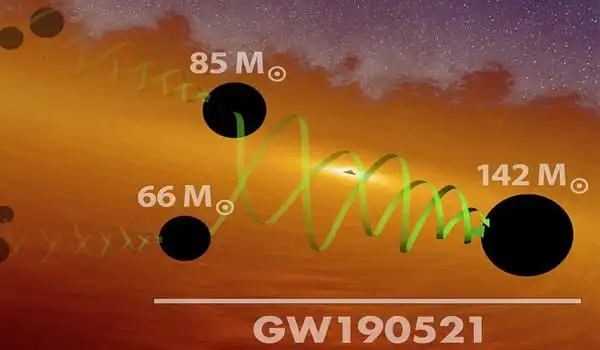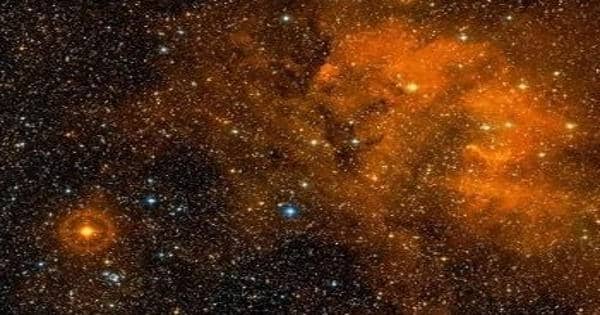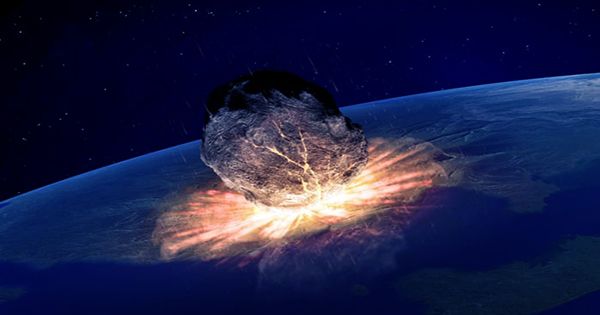It’s possible that two black holes will collide. When they are so close that they can no longer escape each other’s gravity, they will merge to form a larger black hole. An event of this magnitude would be extremely violent. Even after simulating this event on powerful computers, we still do not fully comprehend it. We do know, however, that a black hole merger would generate enormous energy and send massive ripples through the Universe’s space-time fabric. These ripples are referred to as gravitational waves.
Scientists believe they have discovered a merger of two black holes with elongated orbits. This may explain why some previous black hole mergers were much heavier than previously thought possible.
Scientists believe they have discovered a merger of two black holes with eccentric orbits for the first time. This, according to a paper published in Nature Astronomy by researchers from the Rochester Institute of Technology’s Center for Computational Relativity and Gravitation and the University of Florida, can help explain why some of the black hole mergers detected by the LIGO Scientific Collaboration and the Virgo Collaboration are much heavier than previously thought possible.
The estimated masses of the black holes are more than 70 times the size of our sun each. This is an intriguing case to investigate as a second generation binary black hole system, and it opens up new possibilities for black hole formation scenarios in dense star clusters.
Professor Carlos Lousto
Eccentric orbits indicate that black holes may be gobbling up others repeatedly during chance encounters in areas densely populated with black holes, such as galactic nuclei. The scientists investigated GW190521, the most massive gravitational wave binary observed to date, to see if the merger had eccentric orbits.
According to a new paper recently published on the preprint journal arXiv, the easiest way to spot merging giant black holes is to identify the bright accretion disks surrounding each of them (known as active galactic nuclei, or AGN). In fact, we may already be dealing with a candidate soon-to-be merger with the radio galaxy 0402+379. Finding those pairs, on the other hand, is excruciatingly difficult, necessitating hours of meticulous observation—as well as a few lucky breaks.
“The estimated masses of the black holes are more than 70 times the size of our sun each,” said Carlos Lousto, a professor in the School of Mathematical Sciences and a member of the CCRG. “This is an intriguing case to investigate as a second generation binary black hole system, and it opens up new possibilities for black hole formation scenarios in dense star clusters.”

A team of RIT researchers led by Lousto, Research Associate James Healy, Jacob Lange ’20 Ph.D. (astrophysical sciences and technology), Professor and CCRG Director Manuela Campanelli, Associate Professor Richard O’Shaughnessy, and collaborators from the University of Florida reexamined the data to see if the black holes had highly eccentric orbits before merging. They discovered that a high-eccentricity, precessing model best explains the merger. To accomplish this, the team ran hundreds of new full numerical simulations on local and national lab supercomputers over the course of nearly a year.
“This represents a significant advance in our understanding of how black holes merge,” Campanelli said. “We are making new discoveries about the universe at an astonishing rate thanks to our sophisticated supercomputer simulations and the wealth of new data provided by LIGO and Virgo’s rapidly advancing detectors.”
The same RIT and UFL team extended this analysis by using a possible electromagnetic counterpart observed by the Zwicky Transient Facility to independently compute the cosmological Hubble constant with GW150521 as an eccentric binary black hole merger. They discovered excellent agreement with expected values and recently published their findings in the Astrophysical Journal.
Nobody has yet witnessed a black hole collision. However, there are many black holes in the Universe, and it is not implausible that they will collide. Indeed, we have observed galaxies in which two supermassive black holes move dangerously close to each other. According to theoretical models, these black holes will spiral toward each other until they collide.
Gravitational waves have never been observed directly. They are, however, a fundamental prediction of Einstein’s general theory of relativity. Finding them would be a significant test of our understanding of gravity. It would also reveal important new information about the physics of black holes. In recent years, large instruments capable of detecting gravitational waves from space have been built. Even more powerful instruments are in the works. You will undoubtedly hear about it the moment they detect their first gravitational wave!
















